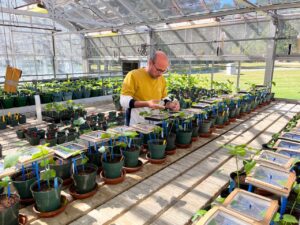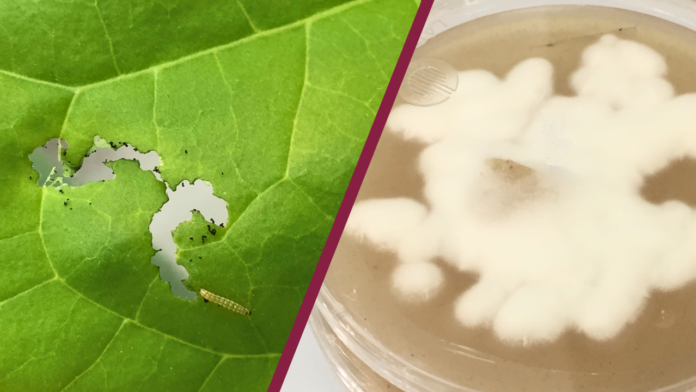In “The Last of Us,” a television and video game series, survivors of an apocalyptic fungal pandemic struggle to survive after the collapse of society, fighting other survivors and the feral humans who have been infected with cordyceps, a mind-altering fungus that turns those it infects into murderous zombies.
In real life, an insect-infecting relative of cordyceps might save Virginia farmers from an “apocalypse” of another kind. Hadi Farrokhzadeh, a visiting scholar at Virginia Tech’s Southern Piedmont Agricultural Research and Extension Center (AREC), is conducting new research using a fungus in the Cordycipitaceae family to control populations of corn earworm – one of the most devastating agricultural pests in the world – on cotton farms.
Cotton remains an important cash crop for the commonwealth, but damage by corn earworm larva is costing farmers a fortune. The second most economically harmful pest in North America, corn earworms are estimated to cost U.S. farmers more than $250 million each year when accounting for crop damage and insecticide costs.
“They feed on the leaves, bolls, and flowers of the plant, disrupting its reproductive process and resulting in reduced yields and lower fiber quality,” Farrokhzadeh said. “Their feeding damage weakens the plant and can lead to further pest infestations and disease.”

Synthetic insecticides have been commonly used to manage corn earworm populations, but the pests can become resistant over time. According to Farrokhzadeh, exploring new management methods is crucial to mitigating damage while also limiting the negative impacts of synthetic insecticides on humans and the environment.
Farrokhzadeh’s research looked at the potential of Beauveria bassiana – an asexually reproducing form of Cordyceps bassiana – to colonize cotton plants and its effectiveness as a biological insecticide against the corn earworm. Farrokhzadeh chose the fungus because it only infects insects in real life, and the specific strain B. bassiana-GHA because it’s endophytic, meaning it can live inside plant tissues without causing harm and has even shown potential to offer protection from various pests.
Funded by Cotton Incorporated, the study involved applying B. bassiana to the leaves of cotton plants and then introducing corn earworm larva to each one. Farrokhzadeh then measured the worms’ survival rate and feeding damage severity on plants treated with the fungus. His results were promising.
“Unlike previous studies that focused on seed treatments, my research demonstrates that foliar application is a viable method for introducing B. bassiana-GHA into cotton plants, offering a new strategy for biological control,” Farrokhzadeh said.
He found that B. bassiana-GHA had a 100 percent colonization rate on cotton plants. In addition, the same plants showed not only reduced corn earworm survival and damage, but also that the bugs tended to avoid treated plants altogether.
When plants detected the presence of the fungus, Farrokhzadeh said, it triggers defensive mechanisms, deterring insects and reducing damage to the plant.
“Hadi’s project definitively demonstrates that an insect pathogen can colonize cotton plant tissue — deterring and reducing corn earworm,” said Arash Rashed, professor of entomology and director of the Southern Piedmont AREC.
However, more evidence is needed to demonstrate how effective the treatment remains over time.
Non-endophytic insect pathogens have short residual activity, limiting the efficacy and cost-effectiveness of biological control. Endophytic insect pathogens like B. bassiana-GHA may provide longer-term protection across a broad range of pests compared to non-endophytic strains.
With rising concerns about pesticide resistance and environmental impact, Farrokhzadeh hopes his research will contribute to the development of eco-friendly pest control solutions that enhance crop protection while reducing reliance on chemical pesticides.
By Alex Hood and Suzanne M.Pruitt


